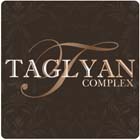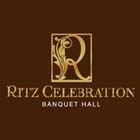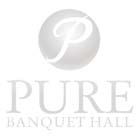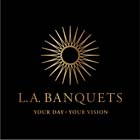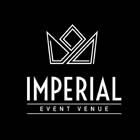
Architectural Lighting Installation & Design in Los Angeles
Lighting designs are so powerful that they can enhance the human experience in a lot of remarkable ways. Well-designed lighting affects our health, senses, and understanding of a specific space. This is why at Acue Express, we are dedicated to providing energy-efficient lighting solutions to fit any type of project. With our creative team of experts, we will develop lighting schemes that will be fully integrated with any kind of architecture, delivering results that provide both visual comfort and a style that adapts to your unique needs. We are in the business of incorporating inspiring architectural lighting designs.
Indoor and outdoor architectural lighting
Our expertise covers different products for indoor and outdoor architectural lighting, which can be custom fitted to your design. As no two locations are the same, we start with design and consulting to decide on the best features for your type of building. We cover properties across diverse sectors, including hospitality, commercial, and retail. Our high-performance architectural lighting design can take on a subtle elegance or be bolder where necessary. No matter what, we harness the expertise and experience of our team of professionals to give every project the innovative approach and close attention to detail, it needs to deliver perfect results, even with retrofitting. It’s an ideal service delivery from consultancy to design stages to after-sales support, whether you need the lighting for aesthetic effects or for a more specific function.
Specialists in excellence
With 20 plus years of architectural lighting experience and thousands of satisfied clients, we have stocked superior products and provide only the best services to give our clients 100% satisfaction. With our knowledge and expertise, we are able to bring any vision to life! Knowing what equipment to use where is key to transforming any space, and our design experts are well equipped. We combine technological expertise and functionality with our passion for using light to transform and enhance any building to deliver successful outcomes. Here at Acue Express, we love what we do. We’re here to help breathe life into your wildest imagination and bring your visions to life. We will be there when you need us! Not only do we provide some of the most technologically advanced products on the market, but we can also provide design, consulting, and installation services for all of it as well. Our attention to detail, unwavering diligence, and years of knowledge gained from experience are all at your disposal.
Call us now at (818) 646-7526 for a quote or contact us using the form below.
Trusted Clients
Get a Quote

Architectural Lighting Design
This is an architectural, interior design and electrical engineering field that deals with designing lighting systems including natural and electrical light for human needs. Human beings benefit from architectural lighting design because the lighting designs enables them to see clearly without straining or having any other discomfort. The main objective of architectural lighting is to enhance the design of the building and any other physical structures. Architectural lighting has a history and the first type of lighting that was used was gas lighting. This type of lighting was adequate to light the streets and the cities in the early 1800s.
In addition to that above, gas lighting was mainly used to light other commercial buildings and to light homes of the wealthy people. During this era, not everyone could afford gas lighting because it was very expensive and only the rich could afford it. Further advancements were made and the gas mantle was designed to illuminate utility lighting and other kerosene lamps. The increased rate of innovation and technological advancement led to the building of light bulbs which were powered by electricity. This was the beginning of the use of electricity.
Concept of Architectural Lighting
This lighting design is based on three major aspects of illuminating buildings or other spaces. The first aspect of architectural lighting design is the illumination of retail environments, which is known as the aesthetic appeal of a building. The second aspect is the ergonomic aspect. This architectural light design is used to measure how much importance is derived from the lighting function. The third and the last aspect of architectural lighting design is the energy efficiency. This aspect ensures that light is not over illuminated or wasted in lighting vacant spaces or buildings that are not in use. Moreover, there are also cultural factors which needs to be put into consideration when using architectural lighting designs.
Culture and Architectural Design
Just as culture influences how people act and think, it also influences how people design their homes and this results to adopting different architectural lighting designs by different cultures. Once you have insight on the values of your culture, you can fully understand how they perceive certain lighting designs and symbols. This will make it easier especially if you are choosing an architectural lighting design for your home. Moreover, there are other cultural dimensions that influence different perceptions and this in turn influences the decision that you will make in selecting the architectural lighting design. For instance, in the Chinese history, bright walls marked wealth in a community.
In Day Lighting, colors that are based on black-body theory give different outputs as compared to the usual. Blue colors usually occur at very high temperatures whereas red colors occur at lower and much cooler temperatures. This is opposite with how different colors perceive colors. Red is usually used to imply hot whereas blue is used to portray warm or cold.
Fixtures of Architectural Lighting
There are different types of light fixtures, because they all perform different functions. The main function of light fixtures is that they act as holders for the source of lighting. They help in providing direct light and avoids visual glare. Some light fixtures are plain, but still performs the desired function whereas some com in the form of art. Additionally, there is no specific material for creating the fixtures. This is because any material can be used as long as it can tolerate the excess heat and is safe in an environment. Transparent light fixtures give high efficiency as compared to opaque light fixtures.
Photometric Studies
This term, also known as Layouts, is a term used to simulate lighting designs for any project before it is built from scratch or renovated. This study is important to engineers and light designers because it enables them to determine if the lighting set up that has been proposed will deliver the required amount of light in a building. Using this study also helps in determining contrast ratio between light and dark areas. Different designs are used depending on the type of the area in question.
Correlated Color Temperatures
The color temperature of a source of light is the temperature of a black body radiator that emits light that has a comparable hue to that of the source of light. Furthermore, color temperature has various applications in photography, lighting, horticulture, publishing and manufacturing among others. When you are lighting the interior of a building, it is important that you consider the color temperature illumination. For instance, warm lights are used to light public places, to promote relaxation whereas cooler colors are used in illuminating offices to increase concentration. There are various career paths in architecture most of which include the following.
- Technical Architect
Large firms usually separate technical architects and design architects. The main difference between technical and design architect is the different phases in which they do their work. A technical architect draws how the building should be put together but he does not define the overall look of the project at hand.
- Design Architect
There are different levels of designers. The levels are not official titles but are recognized in the architectural field. The levels are junior designer, intermediate designer and the senior designer. The design architect is what most people picture architects to be. Whenever one hears of an architect, he or she concludes that it is a design architect. Usually the design architect leads the overall project of the firm, depending on the size of the firm. The design process is different from every architect but the first step for all the architects is to perform a site analysis. The architect surveys the area, takes photos and surveys any existing condition in the land.
- BIM Manager
This is a complete third dimensional model of the structure of building. The manager coordinates multiple models with other consultants from outside. In larger projects, linking the BIM model with the architectural model can be somehow complicated. This role is very important because it helps the project managers to deliver effective projects.
- Specs Writer
A specification writer has a main role of creating a written document that contains different materials, explaining to the builders the different types of materials and how they are used. The main work of the specification writer is to ensure that the components of a building fit well in the model and work together. A specification writer has great importance on large construction projects which require a thousand plus pages of specification document.
- Project Manager
The main duty of a project manager is to carry out the day-to-day duties and responsibilities. Project Managers have leadership skills, motivate other employees, solve problems, advocate and communicate effectively with the other supporting staff. A project manager is responsible for monitoring the project and ensuring that it is completed well.
- Interior Designer
An interior designer is only hired depending on the size of the project. For instance, when constructing a family residence, there is no need to hire an outside interior designer. The architect can carry out the interior design. However, when there is a large project to be worked on, an outside interior designer is hired to design the firm. An interior designer has specific roles which include the following.
- Conduct a research and analyze the goals and requirements of the client.
- Confirm that the space and the design space are safe, appropriate and meet all the safety and public health requirements.
- Select the furniture and equipment that will be used in the site.
- Prepare all the construction documents
- Workplace Consultant
This type of work is most common in large projects. In addition to that, many architects find this specialization option very comfortable. The main reason as to why many people opt for this option is because it is more fun and involves research as compared to the other options which involve strictly design. It is the duty of the workplace consultant to interview the staff and clients on the potential of the project at hand. The reason why they do this is to get a better understanding of what is working and what is not working in the current building. The main goal is to ensure that the clients achieve satisfaction.
- Sustainability Consultant
An architect can specialize in sustainability as a part of large office. This architectural career path is a very important aspect in building and will even become more important in the future. The main function of the sustainability consultant is to reduce the impact that buildings have on the environment and other natural resources.
Terminologies used in Architectural design lighting
Architectural lighting design has many terminologies. Some of the terminologies include;
- Recessed Light
This is a term that is used to refer to the protective housing that is concealed, usually behind a wall or a ceiling, leaving only the light fixture exposed. However, there is also a ceiling mounted version of the fixture and is commonly referred to as the downlight.
- Cove Light
Unlike the recessed light, the cove light is recessed into the ceiling, usually in a long box against the wall.
- Troffer
This is an example of a floor lamp. It is recessed fluorescent life fixture in a rectangular shape to fit into the drop ceiling grid.
- Pendant light
This is a type of light fixture that is suspended from the ceiling with a pipe.
- Sconce
This is a type of light that can be used to illuminate artwork, because it is commonly used in lighting hallways. Sconce is also used as an alternative to overhead lighting.
- Track Lighting
Track lighting is a lighting fixture that is positioned anywhere in the track to provide an electric power.
- Under cabinet lights
This is a type of light that is located on kitchen walls or cabinets to provide light.
- Emergency lighting
This type of light is connected to an energy source and acts as a backup when the main source of power goes off.
- Industrial lighting
Industrial lighting is used in illuminating buildings such as warehouses or even factories.
- Outdoor lighting
Outdoor lighting is used to illuminate outside buildings. It is used to illuminate pathways, gardens, parking lots and even parks.
- Street light
This is a type of outdoor light that is usually mounted on a pole to light the streets and pathways. This type of lighting has a side by side distribution of light source.
- Flood Light
Type of light is also mounted on the pole and is used in lighting walkways and parking spaces.
Types of Lamps
There are a wide variety of lamp types in architectural lighting design. Some of the types of electric lighting include arc lamps, incandescent lights, gas lamps, sulfur lamps, lasers and LEDs. In addition to that, the different types of lamps have different efficiencies and light colors. The most desired efficient source of electric light is the low-pressure sodium lamp. The sodium lamp produces an orange or yellow light that is used to illuminate any scene. This property makes it the best type of light to use in outdoor public lighting.
In addition to the above, the incandescent light bulb is a modern type of light that has a coiled tungsten. This type of light bulb was made from carbon filament bulb which was introduced around the 1880s. Bulbs for normal illumination are of a wide range including low power and low voltage types. Fluorescent light is made up of a glass tube that contains mercury vapor under very low pressures. The electricity that flows through the tube causes the vapor or the gas to give out ultraviolet energy. The lining of the tubes is coated with phosphorus which help in giving out light that can be clearly seen when it is struck by ultraviolet energy.
Florescent lamps are more efficient as compared to the incandescent lamps. Furthermore, Light Emitting Diodes (LEDs) in solid state have become widespread and have been used as indicator lights. The invention of LEDs which give out high output led to this type of light being used for general lighting use or application. The LED lights are also readily available and can be used as a replacement for the florescent and incandescent lamps.



